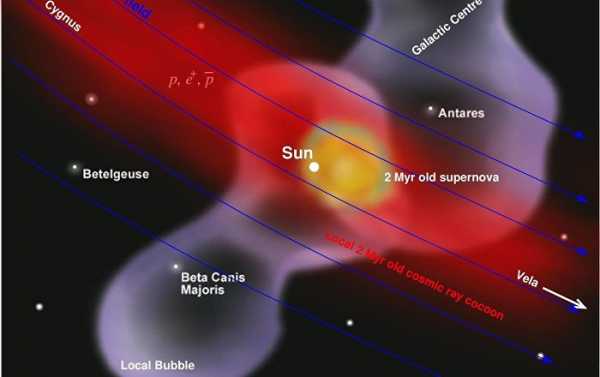
Researchers have stumbled upon evidence pinpointing that FRBs, one of the least studied and most enigmatic phenomena in space, discovered only in 2007, do not necessarily (or perhaps not at all) originate from such cataclysmic events as the formation of neutron stars — the remnant cores of collapsed giant stars — or black holes merging together.
FRBs, cheekily referred to as “alien signals”, are minute, sub-millisecond bursts occurring to radio waves in space, which have been attributed in recent years to a variety of sources – from neutron star mergers to alien spaceships, but no definitive explanations have been made so far.
However, one astronomer, Vikram Ravi at the California Institute of Technology, appears to rule out collisions or supernovae crushing their progenitors as possible causes, citing the fact that while most of the FRBs we have witnessed appear only once, three of them seem to repeat, sending multiple blasts of radio waves across space. His research abstract was posted in the journal “Nature Astronomy”.
Ravi looked at a few of the closest non-repeating FRBs that the telescopes have tracked to estimate a lower limit to the frequency of their occurrence, and then compared the rate to how often the cataclysmic events happen in the surrounding universe.
“The rate of FRBs appears to be higher than the rate of anything we can really think of that can make an FRB just once”, Ravi said, as cited by New Scientist, implying that a single known type of explosion or collision cannot account for all the FRB events, most recent tracked by the Canadian observatory CHIME and the Australia-based ASKAP.
It could of course happen, thereby rendering all the proposals for cataclysmic sources correct, the researcher claims, but perhaps it is more likely that most, if not all, FRBs are actually repetitive. Recently, Professor Ravi’s team was responsible for tracing the latest super-bright event – FRB 190523 – back to a particular galaxy 7.9 billion lightyears away.
“I don’t think we can rule out that there are multiple classes of things that go boom in the radio sky”, commented Victoria Kaspi at McGill University in Montreal, Canada, according to the magazine. “We have suspected and have some evidence that there are multiple classes, and what fractions belong to each class is unknown”, the researcher remarked, saying that none of the models close to hand are “quite fit” for them to estimate “what fraction belongs to each class”.
She went on to say that it is no less possible that the FRBs are formed by events we’ve never seen or considered before. Along the same lines, in an earlier 2018 study, Harvard’s Loeb examined the possibility that fast radio bursts come from radio transmitters constructed by an advanced alien civilisation — possibly evidence of powerful energy beams used to propel alien starships.
Sourse: sputniknews.com






